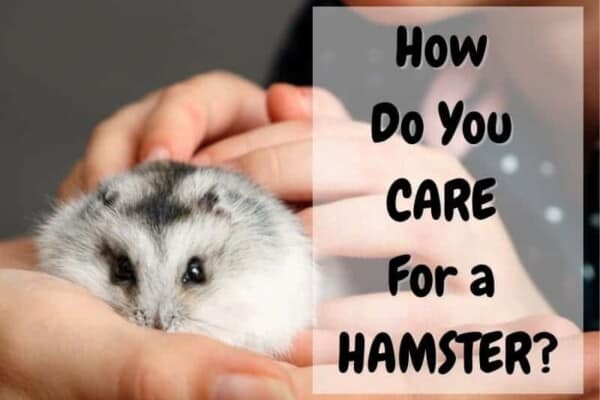Hamsters have a complex language that they use between other hamsters and their owners. It might be difficult to understand what their body language or sounds mean at first, but they are actually not hard to decipher. This hamster behavior guide will help you identify what they want and need so they are healthy and happy.
| Happy Hamster Behavior | Unhappy Hamster Behavior | Abnormal or Distressed Behavior | Hamster Sounds |
|---|---|---|---|
| Watching you | Back Flipping | Traumatized | Chirping |
| Sniffing the air | Frightened and insecure | Repetitive movements | Grunting |
| Stuffing cheeks | Distressed and territorial | Always aggressive | Bruxing |
| Scent marking | Fighting | Sickness | Squeaking |
| Boxing | Apprehensive and uncertain | Whitish eye goop | Teeth chattering |
| Grooming | Rearing up | Weakness | Hissing |
| Burrowing and nesting | Pancake pose with ears back | Lazy and lethargic | Screaming |
| Freezing | Chewing on wire bars | Weight loss | Baring teeth |
| Stretching | Monkey barring | ||
| Standing up tall | Sneezing | ||
| Boggling | Nibbling hand | ||
| Head bopping | Biting | ||
| Eating food from your hand | Depouches immediately | ||
| Creeps alongside the cage |
Signs of a happy hamster
1. Watching you
It won’t be uncommon that your hamster will be watching you from within its cage. Their ears will be standing up and will be curious about what you are doing. This is a positive sign if they are doing this and will be more common when they get used to your presence.
2. Sniffing the air
You might think that a hamster has very good sight, but its nose is a lot more effective to gather information They can smell you in the room even before you have a chance to reach their cage. You’ll see their little nose going nuts smelling the air around them, giving you a visual sign they know you’re there.
3. Stuffing cheeks
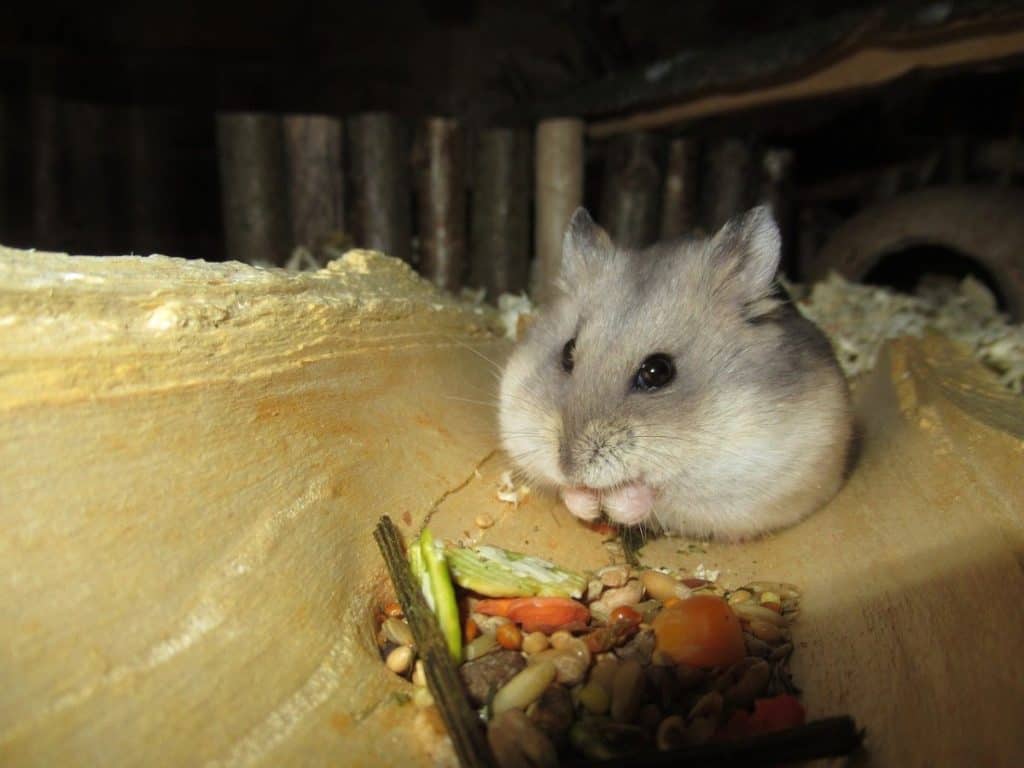
Stuffing of the cheeks is very common for hamsters and isn’t just for packing food into their cheek pouches. They can put bedding into their cheeks to move it to another part of their cage. If they are stuffing their cheeks in front of you, they are relaxed and content with your presence.
4. Scent marking
This will be more common with Syrian hamsters since they have two scent glands on each side of their hind leg hips. They travel along the edges of the cage, rubbing their rump on the walls, even though they live as a single caged pet. The dwarf version has only one scent gland where their belly button would be, so you won’t see this very often.
5. Boxing
Hamsters that live in groups will often be found playing with others, but when they are feeling crowded, they will start boxing. This helps establish social order and shows dominance over other hamsters. It’s a friendly practice that isn’t violent but lets other hamsters know who is stronger and who has more territorial rights.
6. Grooming
Your hamster is going to be grooming pretty often and is a continual activity throughout their waking hours. If they are grooming in front of you, this tells you they don’t mind you being around. This tells you they are totally relaxed and accept your presence.
7. Freezing
If you happen to walk into the room where your hamster is still pretty new, it will be prone to sudden movement, and instantly freeze. This is a hamster’s instinctive reaction to predators nearby, and will simply stop moving out of fear. The next step they will make is to bold for a protective cover when you get too close.
8. Stretching
If you see your hamster stretching out in its cage, you are seeing something pretty special. This means they are completely relaxed in their habitat by showing you their stretching activities. This will only happen when you gain their trust and are familiar with you. You could even interpret it as a sign that your hamster actually likes you.
9. Burrowing and nesting
In the wild, this is what a hamster would be doing normally by making a burrow in the ground for making a nest. Your hamster cage is very different and will likely have a different bedding material. Yet still, they will go about their activity of digging around and making a burrow in what they have.
10. Standing up tall
This is a defensive behavior that’s followed by bringing their forearms up as if they are going to do some boxing. They stand up to look larger than they appear, and it means you are not welcome. If you don’t back off they may be prone to attacking or biting.
11. Boggling
This happens when they are content or happy and often add bruxing sounds, which is a tooth chewing noise. Their eyes will pop out rapidly making them look bug-eyed within milliseconds. If you’ve seen people who have dragonfly eyes’, this looks nearly the same except a lot slower.
12. Head bopping
If your hamster is very happy when being stroked or having its head softly pet, they react with a positive response. Their head rapidly bops up and down with their eyes slightly closed, as if to tell you they like what you’re doing. This comes from being able to bond with your hamster successfully and earning their trust.
13. Taking or eating food from your hand
If your hamster is comfortable enough to eat from your hand, that means that they like you. They will likely start to pouch the food from your hand or eat it piece by piece. If you offer them food in your outstretched hand and they are readily accepting to eat it, you’re a friend to them. Consider yourself very trusted at this point if they do this.
What are the signs of an unhappy hamster?
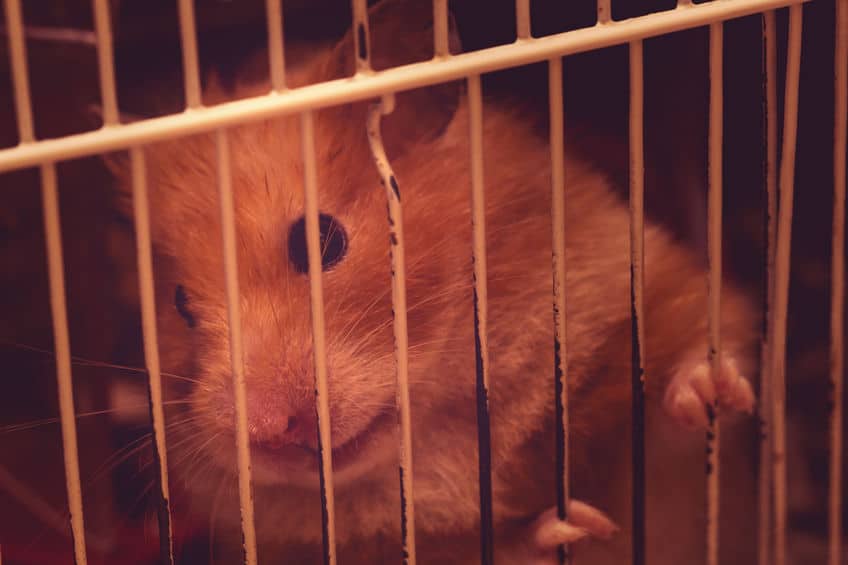
1. Back flipping
This is often perceived as being bored or a sign that their cage is too small for them. New scientific studies have revealed that this is a possible neurologic disorder. Some of these related actions include an activity called ‘star gazing’.
2. Frightened and Insecure
A hamster that runs away from you squeaking in a shrill, or suddenly goes and hides is frightened by you. They may try to bite you out of fear, depending on the distress, so watch for the position of their ears. Alert ears mean aware and frightened, and ears that are pinned back are a warning that they will attack if approached.
Hamsters do get spooked from time to time and this can lead to long-term stress. It’s not as bad as what guinea pigs experience since hamsters are more easygoing. Always be gentle and make slow moves around them to reduce the threat they might perceive.
3. Distressed and territorial
Watch out for a hamster’s head and body lifted up with its ears forward, signaling they may chase you. If you persist, they can even nibble or bite you followed by shrieking loudly. They can do this to show you how you’re invading their territory for any reason at all.
4. Fighting
When a hammy is attacking other hamsters they’ll start by biting the rump, genitals, ears, or eyes. It can happen because of food sources or toys, or simple territorial disputes. If it continues, you have to put the aggressive hamster in another cage if they are causing bleeding or bodily harm.
5. Apprehensive and uncertain
This isn’t always a bad thing but relates to potential fear when they shudder after sniffing something. The hamster will recoil with shaking that appears to be seizure-like, but ends briefly by continuing their investigation in that area.
6. Rearing-up
This is a defensive posture that happens only when they feel threatened. They may also do this with other hamsters to push them away or pin them down. They are asserting dominance and order in their group which could lead to a fight if challenged.
7. Pancake pose with ears back
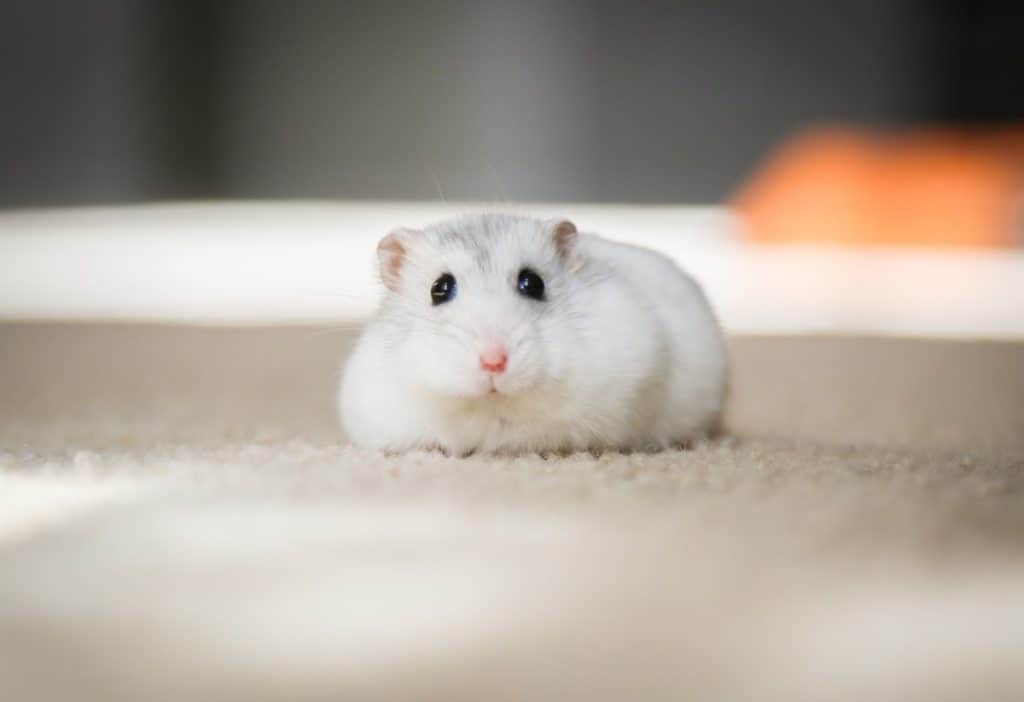
Watch for them crawling very low on their legs toward the ground being as flat as they can. Their ears will be tilted back and tell you they are unsure or scared of their surroundings. This will happen when they are usually out of their cage and in a new home.
8. Monkey barring
Hamsters can indeed climb the walls of their cage but aren’t very good at hanging on. If they reach the ceiling, this is not good for their overall safety. Especially tall cages can result from a fall that can hurt them, so choose a cage that has separated level platforms.
9. Chewing on wire bars
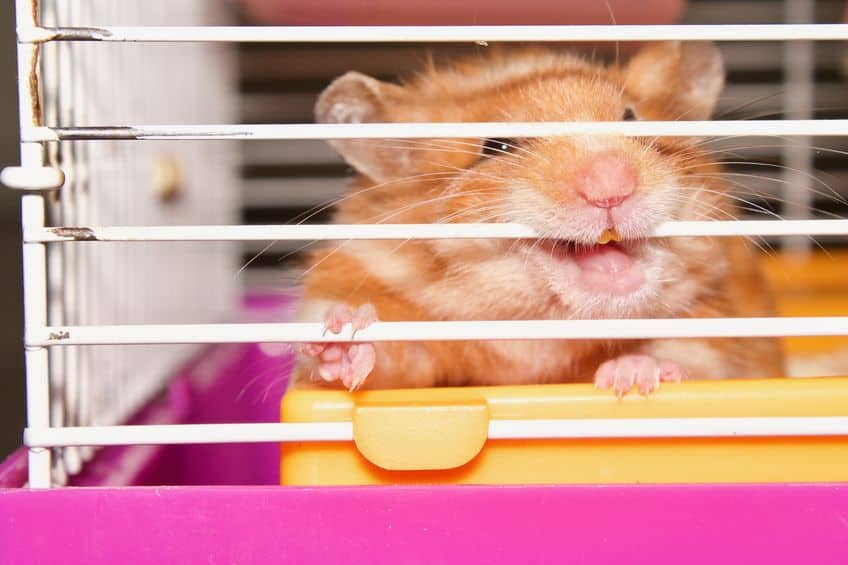
This is often a bad sign that your hamster is bored and wants attention from you. It can also be a desperate attempt to escape a cage that’s not suitable for them anymore.
Check the temperature of the room, as it might be a sign they are too hot. Your hamster may also be bored and wants to come out to play. The worst-case scenario is they’re in a cage that’s too small for them.
10. Sneezing
Obviously, there is something in their bedding that’s causing them to sneeze. The resulting sound is rapid low-volume chirping sounds followed by continual nose rubbing with their front paws. Stop using bedding that could be allergic to them or has too much dust content.
11. Nibbling hand
This is certainly a defensive attack from being disturbed in their cage that’s followed by a chittering noise from them. Don’t make matters worse by thinking it’s a game, it can quickly turn to more aggressive biting. Unless they stop and realize your scent, they could be more defensive and agitated.
12. Biting
There is no other way to describe getting bit by an angry hamster. This is dangerous for them since the reaction we have is to pull back suddenly. This could cause your skin to have more damage, or it could cause harm to your hammy that suddenly goes flying…
13. Depouches immediately
If a hamster feels insecure about its situation and is ready to flee, but has food in its cheek pouches, they spit all of it out. You might have done something shocking enough to cause them to depouch suddenly.
14. Creeps alongside the cage
This is especially obvious when you first get your hamster home from a pet store or vet visit. They will act nervous and unsure of their surroundings, or not sure if something is different in their cage. They’ll get over it after a few hours.
Abnormal behaviors and signs of distress in hamsters

The behaviors listed below are not the signs of a happy or unhappy hamster – they are signs that something is wrong. It could be related to the environment, or a more serious, health-related issue.
1. Traumatized
This involves throwing itself onto its back with its mouth wide open. The sound coming from a hamster will include squawking and shrilling noises. This is an immediate response to being too agitated to the point of trauma.
2. Repetitive movements
This is a sure sign they are mentally not doing well and need something to keep them busy. It’s also a sign the cage is too small and they are acting out their frustration by repeating an action repeatedly.
Watch out for stressful triggers that tell you that your hamster is getting cabin fever. If they are overly bored in their cage, they will resort to this behavior. It may also further tell you they are reaching a mental breaking point which is especially hazardous.
3. Continuously aggressive to others
Any hamster that is acting aggressively toward another should be separated into its own cage. If they are causing bodily harm, you don’t want to spend extra money at the vet fixing those injuries. Aggressive hamsters might be showing dominance that is grown out of control due to an age difference of just 2-3 weeks apart.
If it happens, keep males and females separate and always have a temporary cage as a backup. A travel cage is good if you experience a nasty fight between hamsters. Watch for warning signs of behavior or boredom as soon as they appear.
4. Sickness
Hamsters can get colds but won’t make any sound other than sneezing. When this happens you need to separate them from the others, so you stop the cold from spreading. Your vet can provide antibiotics but you’ll need to make them comfortable until they get better.
5. Whitish eye goop
This is another sign that they are sick from a cold or have a sticky eye (conjunctivitis) or runny eye from something in their eyelid. These can be treated by your vet easier than you can do for them. They might even be suffering from a condition where they go blind causing a ‘white eye’ that comes from developing cataracts.
6. Weakness
This does have a relation to sickness that most owners who know about hamster illnesses will know. If you notice your hamster is showing signs of weakness, watch for its food and water intake. You might need to take your hamster to a vet if they aren’t getting better after a day.
7. Lazy and lethargic behavior
Depending on the time of the year, they may be too hot or cold if they are acting lazy. But if they are unresponsive to your presence, they are definitely sick and need to be brought to a vet right away.
If your hamster is showing signs of weakness, it’s not immediately a health issue. In the winter months, they have been known to be more lethargic and weak. Wild hamsters have also been known to hibernate for a short time as well, although you should not let your pet hamster do the same.
8. Weight loss
This is never a good sign if your hamster is losing weight of any kind. Once you notice they aren’t eating it can be from something that is stressing them. It can be from a stomach blockage from chewing and eating fleece or plastic.
Always keep an eye on your hamster and watch what you put into its cage. It can become a danger that makes them ill. They might stop eating food that has made them sick.
Dominance behavior in hamsters
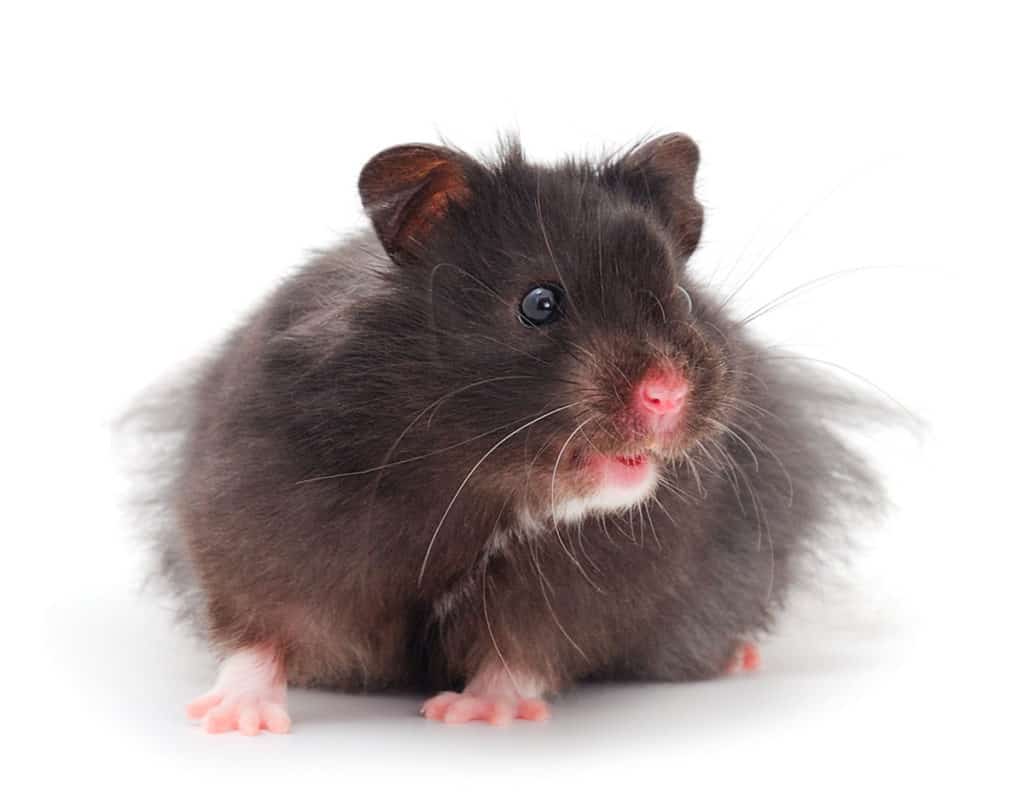
1. Alpha males
As it goes, you must keep males with males in a separate cage separate from the females. As long as they are the same age, they’ll get along just fine without too many aggressive actions.
2. Extreme Alpha males
Any older male that is inside a cage with younger males will automatically be the extreme alpha male. It won’t be uncommon that the older male will try to mound the younger males to assert dominance.
3. Betas males
The youngest hamsters will submit to being the Betas in the group and have to fight for their food and social order standing. This is why it’s always better to have hamsters that are the same age to prevent this.
4. Female dominance
The role of an older female will be shown as aggression toward younger females. The same as males are doing while following a social order. The sexes are separated to prevent your hamster order from getting out of control with an unwanted pregnancy.
5. Pregnant behavior
If a male has been paired with a female for any length of time, the female will surely become pregnant. Her pregnancy will include behavior that is more easily stressed and nervous with extended hoarding of food and building nests. She will be lazier but ultimately more aggressive toward their owners.
6. Courtship behavior
Males approaching females who are ready to mate will be signaled by the female immediately. This is followed by the female lifting her hind to an approaching male. After that, the mating process can be followed by fighting for any number of reasons.
Sounds of a happy hamster
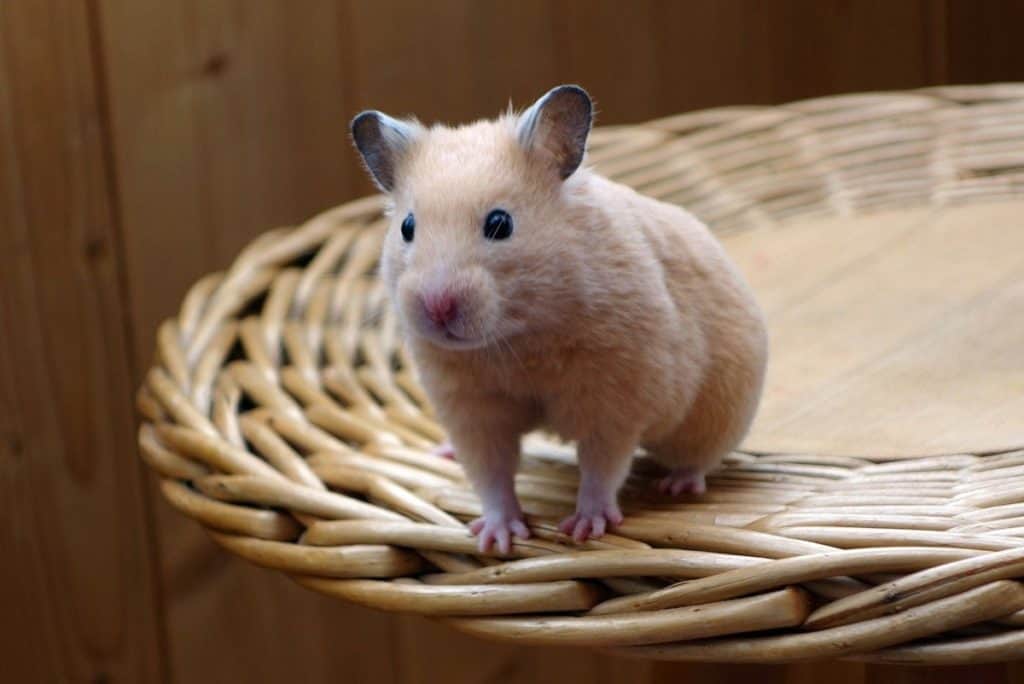
1. Chirping
This is a sound they make to let you know they are saying hello when you enter the room. They also use this to communicate with others in their habitat. You will only hear a single chirp from them, or otherwise, several chirps could mean they are agitated about something.
2. Grunting
Some people might say this sound is more chicken-like than anything else. They make this sound when they are content and it isn’t very loud unless you are about a meter away from their cage. Unlike the bruxing noise, this noise comes from a low form of squeaking.
3. Bruxing
This involves chewing of the upper and lower teeth that make a rasping or comfortable scraping sound. A hamster does this when they are content and it will be normal behavior they do in front of you when they get to know you. It also helps to keep their teeth from getting too long, reducing the need for pumice stones or chew toys for other rodents.
Sounds of an unhappy hamster
1. Squeaking
If you hear any hamster squeaking more than once it means they are upset or something is wrong. They might be afraid of something, or there is an immediate threat in the room. It can also be from two hamsters fighting and one hamster is crying in pain from being bitten.
2. Teeth chattering
If you hear this noise it means they are agitated or upset from you getting too close to them. If you wake them up or startle them in any way, they can respond with this noise. You’ll have to back off until they calm down or you’ll further provoke them even more.
3. Hissing, screaming, and baring teeth
This is a bad sign that you should not approach your hamster until they calm down. Any of these signs tell you right away they are having a bad day. Unless you want to have a nasty bite, don’t get closer to them when you hear these warning sounds.
Do hamsters get lonely?
Syrian hamsters are solitary critters that don’t get lonely at all and will spend their lives in captivity doing just fine. Other breeds don’t do so well and need to be housed with other hamsters for comfort. If they don’t have a partner of the same sex, they will become neurotic and prone to getting ill.
Can you let a hamster roam around the house?
If you use a hamster ball, you can let them roam wherever you let them roam. Without a ball, this will be a disaster if they get lost or escape. If you can’t find them after 4 days, they will likely get sick and die from starvation.
What are the symptoms of a dying hamster?
If your hamster has a lack of appetite that is growing daily, this is a vital sign. If they are getting to be unresponsive or if they respond in pain if you try to touch or move them. If they aren’t moving much at all is a direct sign they are dying. All you can do at this point is keep them comfortable until they pass away.
Related Articles
Resources and further reading:
- The Hamster: Reproduction and Behavior, edited by H.I. Siegel
- Copulatory and agonistic behavior in Syrian hamsters following social defeat, Elizabeth C Jeffress, Kim L Huhman
- Early-life sickness may predispose Siberian hamsters to behavioral changes following alterations of the gut microbiome in adulthood, Kristyn E. Sylvia, Jessica E. Deyoe, and Gregory E. Demas
Contents
- Signs of a happy hamster
- What are the signs of an unhappy hamster?
- Abnormal behaviors and signs of distress in hamsters
- Dominance behavior in hamsters
- Sounds of a happy hamster
- Sounds of an unhappy hamster
- Do hamsters get lonely?
- Can you let a hamster roam around the house?
- What are the symptoms of a dying hamster?



